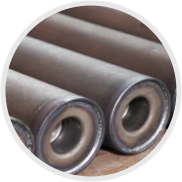 Afrikaans
Afrikaans  Albanian
Albanian  Amharic
Amharic  Arabic
Arabic  Armenian
Armenian  Azerbaijani
Azerbaijani  Basque
Basque  Belarusian
Belarusian  Bengali
Bengali  Bosnian
Bosnian  Bulgarian
Bulgarian  Catalan
Catalan  Cebuano
Cebuano  Corsican
Corsican  Croatian
Croatian  Czech
Czech  Danish
Danish  Dutch
Dutch  English
English  Esperanto
Esperanto  Estonian
Estonian  Finnish
Finnish  French
French  Frisian
Frisian  Galician
Galician  Georgian
Georgian  German
German  Greek
Greek  Gujarati
Gujarati  Haitian Creole
Haitian Creole  hausa
hausa  hawaiian
hawaiian  Hebrew
Hebrew  Hindi
Hindi  Miao
Miao  Hungarian
Hungarian  Icelandic
Icelandic  igbo
igbo  Indonesian
Indonesian  irish
irish  Italian
Italian  Japanese
Japanese  Javanese
Javanese  Kannada
Kannada  kazakh
kazakh  Khmer
Khmer  Rwandese
Rwandese  Korean
Korean  Kurdish
Kurdish  Kyrgyz
Kyrgyz  Lao
Lao  Latin
Latin  Latvian
Latvian  Lithuanian
Lithuanian  Luxembourgish
Luxembourgish  Macedonian
Macedonian  Malgashi
Malgashi  Malay
Malay  Malayalam
Malayalam  Maltese
Maltese  Maori
Maori  Marathi
Marathi  Mongolian
Mongolian  Myanmar
Myanmar  Nepali
Nepali  Norwegian
Norwegian  Norwegian
Norwegian  Occitan
Occitan  Pashto
Pashto  Persian
Persian  Polish
Polish  Portuguese
Portuguese  Punjabi
Punjabi  Romanian
Romanian  Russian
Russian  Samoan
Samoan  Scottish Gaelic
Scottish Gaelic  Serbian
Serbian  Sesotho
Sesotho  Shona
Shona  Sindhi
Sindhi  Sinhala
Sinhala  Slovak
Slovak  Slovenian
Slovenian  Somali
Somali  Spanish
Spanish  Sundanese
Sundanese  Swahili
Swahili  Swedish
Swedish  Tagalog
Tagalog  Tajik
Tajik  Tamil
Tamil  Tatar
Tatar  Telugu
Telugu  Thai
Thai  Turkish
Turkish  Turkmen
Turkmen  Ukrainian
Ukrainian  Urdu
Urdu  Uighur
Uighur  Uzbek
Uzbek  Vietnamese
Vietnamese  Welsh
Welsh  Bantu
Bantu  Yiddish
Yiddish  Yoruba
Yoruba  Zulu
Zulu Innovative Ceramic Lagging Solutions for Durable Conveyor Pulley Performance and Efficiency
The Advantages and Applications of Ceramic Lagging on Conveyor Pulleys
In various industrial environments, efficient material handling is crucial for productivity and operational success. One component that plays a significant role in conveyor systems is the conveyor pulley. The performance of a pulley can be greatly enhanced with the application of ceramic lagging, which offers a range of benefits that make it a preferred choice in many settings.
What is Ceramic Lagging?
Ceramic lagging involves the application of ceramic blocks or tiles to the surface of a conveyor pulley. These ceramic materials are typically made from high-quality, wear-resistant compounds that withstand the harsh conditions often present in industrial environments. The primary purpose of lagging is to provide increased traction and protection to the pulley and belt interface, promoting smoother operation and extending the lifespan of the equipment.
Benefits of Ceramic Lagging
1. Increased Traction One of the most significant advantages of ceramic lagging is its ability to provide excellent grip between the conveyor belt and the pulley. This increased traction reduces the likelihood of slippage, especially under heavy loads and high torque applications. Improved grip ensures that the materials being transported move efficiently and reliably through the system.
2. Wear Resistance Industrial environments can be harsh, with abrasive materials and challenging operating conditions that can lead to accelerated wear of components. Ceramic lagging is designed to resist abrasion and wear, extending the life of both the pulley and the conveyor belt. This resistance not only reduces maintenance frequency but also lowers the total cost of ownership over time.
3. Low Maintenance Requirements The durability of ceramic lagging means that it requires minimal maintenance compared to rubber or other traditional lagging materials. When properly installed, ceramic lagging can endure for years, requiring less frequent inspections and replacements. This reliability allows maintenance teams to focus on other critical areas of the conveyor system.
4. Heat Resistance Many industrial operations generate heat, either from the process itself or due to friction within the machinery. Ceramic materials can withstand high temperatures without degrading, making them suitable for applications where thermal conditions might damage other types of lagging. This feature is particularly important in sectors such as mining, where high temperatures can be commonplace.
5. Chemical Resistance Many industries use chemicals that can corrode or damage standard lagging materials. Ceramic lagging offers superior resistance to many chemicals, making it ideal for use in environments where exposure to corrosive substances is likely. This ensures that the lagging remains effective and protective over time.
ceramic lagging conveyor pulley

6. Customization Ceramic lagging can be tailored to meet specific operational requirements. The tiles can be designed in various sizes and shapes to fit different pulley dimensions and configurations. Additionally, the color and pattern of the ceramic tiles can be customized, allowing companies to align their equipment aesthetics with their branding needs.
Applications of Ceramic Lagging
Due to its distinct advantages, ceramic lagging is utilized across various industries, including
- Mining and Mineral Processing In these sectors, the transportation of heavy and abrasive materials is common. Ceramic lagging helps minimize wear and maximize efficiency, ensuring that operations run smoothly.
- Construction Heavy machinery frequently used in construction often employs conveyor systems. To handle the stresses of transporting aggregates and other materials, ceramic lagging provides the necessary durability and traction.
- Food Processing Certain applications in food handling require materials that can withstand cleaning chemicals without losing integrity. Ceramic lagging meets these needs while providing an anti-slip surface for product movement.
- Waste Management In waste processing plants, conveyors handle a variety of materials, including debris and recyclable items. The wear resistance of ceramic lagging ensures that pulleys do not degrade rapidly under these harsh conditions.
Conclusion
Ceramic lagging on conveyor pulleys represents a revolutionary advancement in the field of material handling and conveyor technology. With its unique properties of enhanced traction, durability, and resistance to wear, heat, and chemicals, ceramic lagging stands out as a superior choice for industries aiming to optimize their operations. As industries continue to rely on efficient and effective material transport systems, the adoption of ceramic lagging is likely to grow, providing substantial benefits in both performance and cost efficiency.
-
Revolutionizing Conveyor Reliability with Advanced Rubber Lagging PulleysNewsJul.22,2025
-
Powering Precision and Durability with Expert Manufacturers of Conveyor ComponentsNewsJul.22,2025
-
Optimizing Conveyor Systems with Advanced Conveyor AccessoriesNewsJul.22,2025
-
Maximize Conveyor Efficiency with Quality Conveyor Idler PulleysNewsJul.22,2025
-
Future-Proof Your Conveyor System with High-Performance Polyurethane RollerNewsJul.22,2025
-
Driving Efficiency Forward with Quality Idlers and RollersNewsJul.22,2025





























